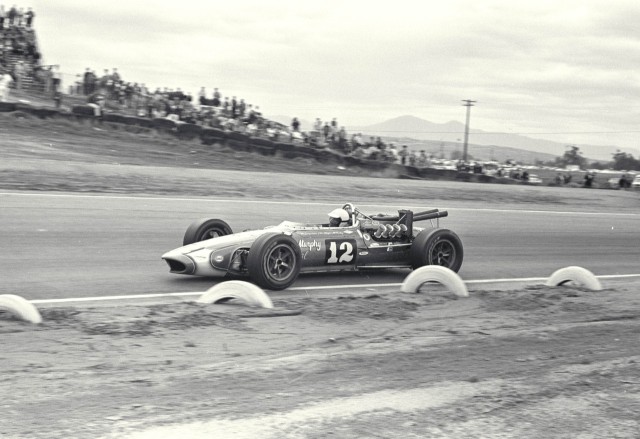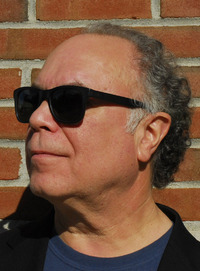INDYCAR'S VICIOUS CIRCLE.
 Monday, April 27, 2015 at 08:57AM
Monday, April 27, 2015 at 08:57AM By Peter M. De Lorenzo
Detroit. After lambasting IndyCar over the past several weeks - and deservingly so, I might add - the perennially challenged bunch put on a great show at Barber Motorsports Park over the weekend. After stinking up the airwaves with its disastrous turn at NOLA Motorsports Park - the not-ready-for-primetime road course outside of New Orleans - IndyCar thankfully presented a proper motor race at the beautiful, natural-terrain road racing circuit in Birmingham, Alabama (see more coverage with photos in "The Line" -WG).
The entertaining race had the one thing that everyone is looking for and should be expecting from IndyCar, and that is balls-out racing throughout the field, plus, it had the compelling story of two young American drivers - Josef Newgarden and an amped-up Graham Rahal - driving the best races of their careers providing the drama at the end of the race. It was one of the more satisfying races IndyCar has put on in years. But one race does not salvage a declining form of motorsport, nor does it justify some of the piss-poor decisions that have plagued IndyCar for the last several years. It is only a glimmer of what could be if clear-eyed thinking and some visionary approaches took hold of the sport, and that is all.
It's obvious that in terms of coverage by the "stick and ball"-oriented media, IndyCar is the Indianapolis 500 in May and a forgettable bunch of nothing else that makes up a racing calendar that the mainstream media is happy to ignore. That is a High-Octane Truth that IndyCar has never been able to crack since the series splintered in two and allowed NASCAR to waltz in and become corporate America's idea of racing. Unfortunately, the powers that be that control IndyCar seem to think that the good times are right around the corner, that if they could just catch a break America would come back to the sport in droves and everything would be right as rain again.
I hate to break it to the IndyCar brain trust, but that couldn't be further from reality. Major league open-wheel racing in America has become the Sideshow Bob of motorsport and there's no amount of wishing and hoping that will change that. So what can IndyCar hope to do in the interim? I would say that for starters, IndyCar needs to present cracking-good motor racing conducted at a high level, and do so in the best possible venues that will showcase the sport at its best. Yes, I know, easier said than done and for all practical purposes, glorified lip service.
The Indianapolis 500 at the Indianapolis Motor Speedway is the shining beacon of light in an otherwise mediocre calendar of races. Still the greatest single motor race in the world, the Indy 500 bestows a level of integrity and gravitas to the sport of Indy car racing that the rest of the series cumulatively can't even hope to match.
So what can be done about the rest of the IndyCar calendar? For one thing, the notion that "we race there because we've always raced there" - which ironically enough is NASCAR's guiding principle - is simply unacceptable. Right off the bat, this also supports the ingrained notion of "we need to bring the races to the people," which ends up presenting a series of races on street courses that either have no business holding a race at all, or are recipes for poor facsimiles of "racing" that devolve into rote processionals holding little interest and that do nothing to present the spectacular nature of Indy cars.
What is the one glaring takeaway from the race at Barber Motorsports Park? It is that when IndyCar goes road racing, they need to do so on natural-terrain road racing circuits that showcase the pure speed of the cars in the best possible environments. And it affords the opportunity for more compelling television at the same time, which in the end, is crucial.
Why is this formula so hard for IndyCar to understand? Because too many of the players involved have a vested interest in doing the exact opposite, meaning, too many players - and you know who they are - have their hands in the till busily promoting street races for the money and not for reasons of presenting the sport in the best possible light. And this has to stop.
A total rethink of the cars - and the diversity of thought that goes with them - has to be undertaken, too, but as I've mentioned a thousand times over the years, that costs money and the core owners of the teams in the sport have no stomach for it, unless someone else is paying for it, that is. And that would require several manufacturers - at least double the number involved now - to step into the sport and spend money that goes well beyond supplying engines, and that's not likely to happen either.
Why? Because there's a quintessential "vicious circle" surrounding Indy car racing at the moment, which goes something like this: In order for IndyCar to break out of its perennial two-steps forward, five-back dance of mediocrity, the sport needs an infusion of manufacturer interest and cash, and substantive financial interest from corporate America and the television networks so that they can open up the rulebook and present an energized form of racing that can give NASCAR a run for its money. But in order for that to happen, IndyCar needs to present a package of fundamental desirability, which beyond the Indianapolis 500 simply doesn't exist.
That's all sobering stuff for the future of Indy car racing in this country, and those issues will keep vexing the sport for the foreseeable future.
In the meantime, we'll have to celebrate brief glimpses of racing magic whenever they happen in IndyCar, like the engaging race that took place at Barber Motorsports Park last Sunday.
Publisher's Note: As part of our continuing series celebrating the "Glory Days" of racing, we're proud to present another noteworthy image from the Ford Racing Archives. - PMD
 (Photo by Dave Friedman courtesy of the Ford Racing Archives)
(Photo by Dave Friedman courtesy of the Ford Racing Archives)
Riverside, California, November 26, 1967. Roger McCluskey (No. 12 Lindsey Hopkins/G.C. Murphy Eagle-Ford) at speed in the Rex Mays 300 USAC Champ Car Series race at Riverside International Raceway. McCluskey qualified seventh and finished fifth in a race dominated by pole-sitter Dan Gurney (No. 48 All American Racers/Olsonite Eagle-Ford). Bobby Unser (No. 6 Bob Wilke/Rislone Eagle-Ford) finished second, Mario Andretti (No. 1 Al Dean/Dean Van Lines Brawner Hawk-Ford) third, and Lloyd Ruby (No. 25 Gene White/American Red Ball Mongoose-Ford) finished fourth. Watch a video here.
Publisher's Note: Like these Ford racing photos? Check out www.fordimages.com. Be forewarned, however, because you won't be able to go there and not order something. - PMD




